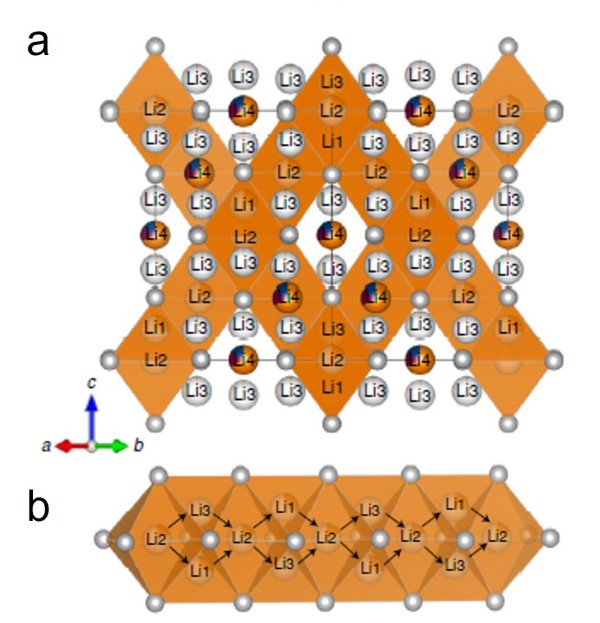Li-ion Batteries Enabled by Chloride Solid Electrolytes

Scientific Achievement
It is shown that 3D Li-ion diffusion pathways with a considerable site fraction of vacancies are responsible for a high ionic conductivity in a new chlorospinel solid electrolyte Li2In1/3Sc1/3Cl4.
Significance and Impact
This work provides a new approach for the design of solid electrolytes with an emphasis on ultralow electronic conductivity and excellent chemical compatibility between cathode and solid electrolyte.
Research Details
- Crystal structure of the solid electrolyte (Li2In1/3Sc1/3Cl4) was determined via high resolution powder neutron diffraction.
- The ionic conductivity and activation energy were determined with temperature-dependent electro-chemical impedance spectroscopy (EIS) measurements.
- Interface stability was confirmed by time-of-flight secondary-ion mass spectrometry (TOF-SIMS) surface analysis.
“High Areal Capacity, Long Cycle Life 4 V Ceramic All-solid-state Li-ion Batteries Enabled by Chloride Solid Electrolytes”
Laidong Zhou, Tongtong Zuo, Chun Yuen Kwok, Se Young Kim, Abdelijalil Assoud, Qiang Zhang, Jurgen Janek, and Linda Nazar,
Nature Energy 7, 83-93 (2022).
DOI: https://doi.org/10.1038/s41560-021-00952-0



